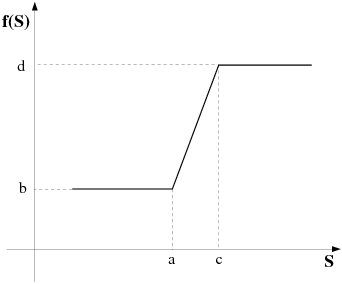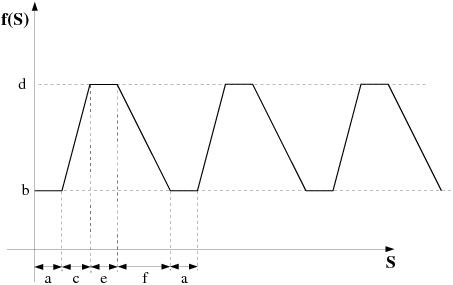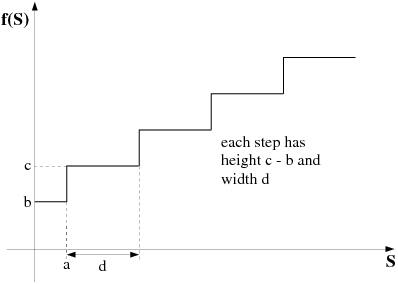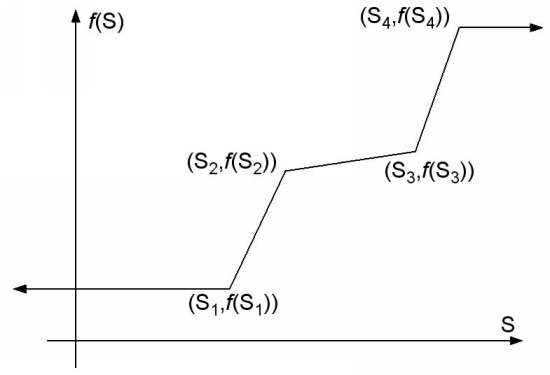The choices of the evolution function are listed below:
This is the default function.
When using this function, you must make sure that
is never zero by setting the initial value and upper limit of
appropriately in the Numerical parameters menu. This function is recommended when the power law index is used as an evolutive parameter. It is also recommended in order to decrease the thermal conductivity for nonisothermal flows with a high Péclet number.
The values of
,
,
, and
can be set, allowing a wide variety of polynomial functions.
ramp function
This is a function with four parameters (
,
,
, and
) that define the corners of a ramp function as illustrated in Figure 28.2: Ramp Function.
This is a function with five parameters (
,
,
,
, and
) that combines a linear component and a periodic component.
This function has four parameters (
,
,
, and
) that control its rate of growth.
This function is suggested when wall slip is used as an evolutive parameter.
double ramp function
This is a function with seven parameters (
,
,
,
,
,
,
) that define the corner values of a double ramp function as illustrated in Figure 28.3: Double Ramp Function.
trapezoidal wave
This is a function with six parameters (
,
,
,
,
,
) that define a trapezoidal wave as shown in Figure 28.4: Trapezoidal Wave Function.
H step function
This is a step function with four parameters (
,
,
,
). It is illustrated in Figure 28.5: H Step Function.
= multi-ramp function. The multi-ramp function is a generalization of the simple ramp. It can also be converted into a piecewise linear function, and it is thus defined by means of pairs of data (
,
), where all
are given in ascending order. Figure 28.6: Multi-ramp Function Defined with Four Pairs of Data illustrates such a function.
The definition of such a function can be done interactively by introducing the sequence of pairs of data; the results of which can be saved into a dependence file. Alternatively, the data for the multi-ramp function can be read from a file, where the pairs of data must be written with the fixed (Fortran) format 2e14.7. This means that each pair of data (
,
) is written on a single line, and fourteen digits are used for representing each data as
0.1234567e
. Since the format is fixed, there is no need to use a separator. For a single data, the format e14.7 successively involves: a sign, a 0 digit, the decimal dot, seven digits (for the mantissa), the letter "e" standing for a power of 10 eventually given by its sign and the last two digits. In such a format, -
is then represented as -0.31415926e+01. If an entry (
,
) in the file consists of (0.25,-
), for example, it will be represented as +0.2500000e+00-0.31415926e+01. Subsequent pairs of data are written on subsequent lines.







